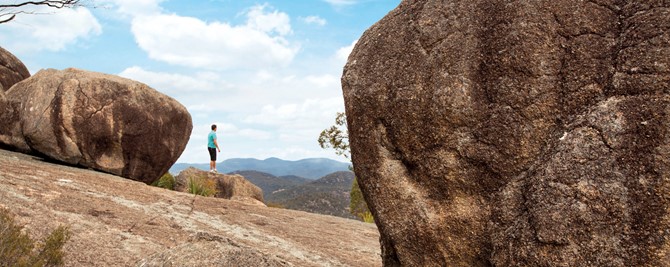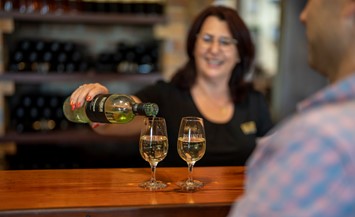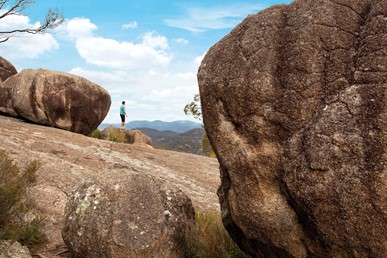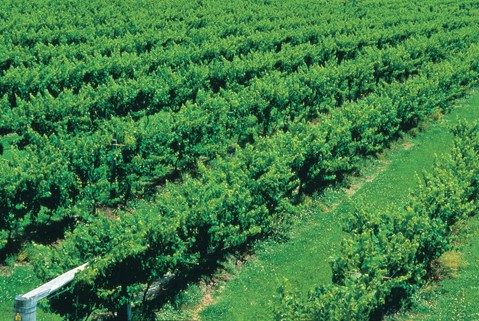Agriculture and Tourism - regional economic contributions and links: A case study of the wine and tourism industries in the Granite Belt region
Archive
- May 2022
- Apr 2022
- Nov 2021
- Oct 2021
- Sep 2021
- Jun 2021
- Nov 2020
- Oct 2020
- Sep 2020
- Aug 2020
- Jul 2020
- Jun 2020
- Apr 2020
- Oct 2019
- Sep 2019
- Aug 2019
- Jul 2019
- Jun 2019
- May 2019
Categories
- Policy Development
- Value Chain
- Economic Tools
- Innovation
- General
Back to Research Papers/Webinars

Agriculture and Tourism - regional economic contributions and links: A case study of the wine and tourism industries in the Granite Belt region
30 April 2022
Authors: Dr Sally Driml, Associate Professor Richard Brown, Dr Lintje Sie, Mr Spencer (Yumeng) Tong, The University of Queensland.
This project had three principal aims. The main aim was to provide a better understanding of the potential for regional industry diversification by taking a close look at economic and other links between two rural/regional industries, in this case agriculture and tourism. To this end a case study of Queensland’s Granite Belt (GB) region wine and tourism industries was selected as this is a relatively mature example of an agritourism setting. Secondly the project aimed to develop and pilot a data collection methodology for wine producers, that would provide sufficient data for this study but also provide a format for future data collection and analysis on an ongoing basis, not only for wine producers but also adaptable to use for other small regional agricultural industries, particularly those with tourism links. Thirdly, the project aimed to provide a better understanding of regional tourism attraction clusters by exploring the interactions between wine, national park, and other attractions in providing a ‘critical mass’ of attractions for tourists.
Image provided by Tourism and Events Queensland

The broader project consists of an overview Project Report supported by three data and analysis reports. These studies present a considerable amount of detailed information produced by this research. This is the first study to provide detailed economic information about the linkages between the wine and tourism industries in the GB region.
An economic survey of the Granite Belt grape and wine (GBGW) industry was developed and conducted in consultation with industry representatives. The use of Input-Output (I-O) analysis as the main economic modelling tool applied in this study provided useful information about the strength of the linkages between industries in a region; information that is not available otherwise for a small region. In terms of quantification of the strength of these linkages, it was estimated that the GBGW sector generates $2.26 worth of additional output in other sectors, for every $1 worth of gape/wine output, making it the sector with by far the strongest forward linkages in the GB regional economy. In addition, in terms of backward linkages, it was found that for every $1 of wine supplied, a further $1.23 in output was generated in other sectors of the GB economy supplying inputs, which also places it among the region’s strongest sectors in terms of backward linkages.
Linkages between the wine and tourism industries occur in the form of direct participation by GBGW businesses in the tourism industry through offering cellar door attractions and sales, food and beverage, accommodation, and events. The survey found that the GBGW industry offers a critical attraction for tourism to the GB region, with over 80 per cent offering on-site cellar door facilities and 30 per cent offering on-site paid accommodation facilities for tourists. Thus, tourism-generated income is part of the income to these businesses. In effect, the economic value of the GBGW industry is more than simply measured by sales and employment in the GBGW industry itself.
Linkages also occur through wineries being the number one tourism attraction to the GB destination. Tourists to the destination attracted by the opportunity to visit wineries, also spend money in other businesses while in the GB region. It was estimated from the analysis of Tourism Research Australia (TRA) data that expenditure by visitors to the GB destination was $79 million per annum and conservatively $19 million was spent by visitors who visited wineries. The Visitor Survey found that 40 per cent of respondents nominated the presence of wineries to be essential to their decision to visit the GB destination and this points to a higher amount of around $30 million in visitor expenditure that could be attributed to the wineries as attractions.
Image provided by Tourism and Events Queensland

Extending the findings of this research to broader observations for regions developing agritourism as an economic activity, several of the approaches of the GB region can provide guidance.
- Firstly, the GBGW provides a point of attraction and distinctiveness compared with other tourism and even other wine regions. The cluster of wineries is definitely part of the attraction and the collaboration of GBGW industry in developing a wine trail, wine tourism organisation and marketing of the region is also important.
- Secondly, collaboration is important both within the agricultural industry and with the broader tourism industry in a region. Collaboration of the GBGW industry with the broader tourism industry will be important to future destination attractiveness. Notably, visitors called for more attractions to be open during the week, and for information on what was open, to be made available in real time.
- Thirdly, for a region to mature beyond agritourism and become a more developed and mature tourism destination, supplementary attractions and activities need to be developed. While wine tourism continues to be a major attraction in the GB region, in order to extend tourism to weekdays and across seasons, other attractions have been suggested by both visitors and industry representatives.
There are four reports for this research project, linked here.
- Agriculture and Tourism – regional economic contributions and links. A case study of the wine and tourism industries in the Granite Belt region. Project Report
- The contribution of the grape and wine industry to the regional economy of Queensland’s Granite Belt
- Tourism in the Granite Belt Destination Report
- The Granite Belt Visitor Survey Report
Image provided by Tourism and Events Queensland

-ENDS-
Media contact:
Rhianwen Whitney, Email: rhianwen.whitney@usq.edu.au, Phone: 0427 428 380
Sarah Green, Email: sarah.green@usq.edu.au, Phone 0417 799 331

